- Home
- J. K. Rowling
The Hogwarts Library Collection Page 2
The Hogwarts Library Collection Read online
Page 2
Nevertheless there are still plenty of beasts that, whether wilfully or inadvertently, remain conspicuous even to the Muggle eye, and it is these that create a significant amount of work for the Department for the Regulation and Control of Magical Creatures. This department, the second largest at the Ministry of Magic,9 deals with the varying needs of the many species under its care in a variety of different ways.
SAFE HABITATS
Perhaps the most important step in the concealment of magical creatures is the creation of safe habitats. Muggle-repelling charms prevent trespassers into the forests where centaurs and unicorns live and on the lakes and rivers set aside for the use of merpeople. In extreme cases, such as that of the Quintaped, whole areas have been made unplottable.10
Some of these safe areas must be kept under constant wizarding supervision; for example, dragon reservations. While unicorns and merpeople are only too happy to stay within the territories designated for their use, dragons will seek any opportunity to set forth in search of prey beyond the reservation borders. In some cases Muggle-repelling charms will not work, as the beast’s own powers will cancel them. Cases in point are the kelpie, whose sole aim in life is to attract humans towards it, and the Pogrebin, which seeks out humans for itself.
CONTROLS ON SELLING AND BREEDING
The possibility of a Muggle being alarmed by any of the larger or more dangerous magical beasts has been greatly reduced by the severe penalties now attached to their breeding and the sale of their young and eggs. The Department for the Regulation and Control of Magical Creatures keeps a strict watch on the trade in fantastic beasts. The 1965 Ban on Experimental Breeding has made the creation of new species illegal.
DISILLUSIONMENT CHARMS
The wizard on the street also plays a part in the concealment of magical beasts. Those who own a Hippogriff, for example, are bound by law to enchant the beast with a Disillusionment Charm to distort the vision of any Muggle who may see it. Disillusionment Charms should be performed daily, as their effects are apt to wear off.
MEMORY CHARMS
When the worst happens and a Muggle sees what he or she is not supposed to see, the Memory Charm is perhaps the most useful repair tool. The Memory Charm may be performed by the owner of the beast in question, but in severe cases of Muggle notice, a team of trained Obliviators may be sent in by the Ministry of Magic.
THE OFFICE OF MISINFORMATION
The Office of Misinformation will become involved in only the very worst magical–Muggle collisions. Some magical catastrophes or accidents are simply too glaringly obvious to be explained away by Muggles without the help of an outside authority. The Office of Misinformation will in such a case liaise directly with the Muggle prime minister to seek a plausible non-magical explanation for the event. The unstinting efforts of this office in persuading Muggles that all photographic evidence of the Loch Ness kelpie is fake have gone some way to salvaging a situation that at one time looked exceedingly dangerous.
* * *
7. In his 1972 book Muggles Who Notice, Blenheim Stalk asserts that some residents of Ilfracombe escaped the Mass Memory Charm. ‘To this day, a Muggle bearing the nickname “Dodgy Dirk” holds forth in bars along the south coast on the subject of a “dirty great flying lizard” that punctured his lilo.’
8. For a fascinating examination of this fortunate tendency of Muggles, the reader might like to consult The Philosophy of the Mundane: Why the Muggles Prefer Not to Know, Professor Mordicus Egg (Dust & Mildewe, 1963).
9. The largest department at the Ministry of Magic is the Department of Magical Law Enforcement, to which the remaining six departments are all, in some respect, answerable – with the possible exception of the Department of Mysteries.
10. When an area of land is made unplottable, it is impossible to chart on maps.
WHY MAGIZOOLOGY MATTERS
The measures described above merely hint at the full scope and extent of the work done by the Department for the Regulation and Control of Magical Creatures. It remains only to answer that question to which we all, in our hearts, know the answer: why do we continue, as a community and as individuals, to attempt to protect and conceal magical beasts, even those that are savage and untameable? The answer is, of course: to ensure that future generations of witches and wizards enjoy their strange beauty and powers as we have been privileged to do.
I offer this work as a mere introduction to the wealth of fantastic beasts that inhabit our world. Eighty-one species are described in the following pages, but I do not doubt that more will be discovered, necessitating another revised edition of Fantastic Beasts and Where to Find Them. In the meantime I will merely add that it affords me great pleasure to think that generations of young witches and wizards have grown to a fuller knowledge and understanding of the fantastic beasts I love through the pages of this book.
MINISTRY OF MAGIC CLASSIFICATIONS
The department for the regulation and Control of Magical Creatures gives classifications to all known beasts, beings and spirits. These offer an at-a-glance guide to the perceived dangerousness of a creature. The five categories are as follows:
Ministry of Magic (M.O.M.) Classification
XXXXX
Known wizard killer/impossible to train or domesticate
XXXX
Dangerous/requires specialist knowledge/skilled wizard may handle
XXX
Competent wizard should cope
XX
Harmless/may be domesticated
X
Boring
In some cases I have felt an explanation for the classification of a particular beast is necessary and have added footnotes accordingly.
ACROMANTULA
M.O.M. CLASSIFICATION: XXXXX
The Acromantula is a monstrous eight-eyed spider capable of human speech. It originated in Borneo, where it inhabits dense jungle. Its distinctive features include the thick black hair that covers its body; its legspan, which may reach up to fifteen feet; its pincers, which produce a distinctive clicking sound when the Acromantula is excited or angry; and a poisonous secretion. The Acromantula is carnivorous and prefers large prey. It spins dome-shaped webs upon the ground. The female is bigger than the male and may lay up to one hundred eggs at a time. Soft and white, these are as large as beach balls. The young hatch in six to eight weeks. Acromantula eggs are defined as Class A Non-Tradeable Goods by the Department for the Regulation and Control of Magical Creatures, meaning that severe penalties are attached to their importation or sale.
This beast is believed to be wizard-bred, possibly intended to guard wizard dwellings or treasure, as is often the case with magically created monsters.11 Despite its near-human intelligence, the Acromantula is untrainable and highly dangerous to wizard and Muggle alike.
Rumours that a colony of Acromantula has been established in Scotland are unconfirmed.
ASHWINDER
M.O.M. CLASSIFICATION: XXX
The Ashwinder is created when a magical fire12 is allowed to burn unchecked for too long. A thin, pale-grey serpent with glowing red eyes, it will rise from the embers of an unsupervised fire and slither away into the shadows of the dwelling in which it finds itself, leaving an ashy trail behind it.
The Ashwinder lives for only an hour and during that time seeks a dark and secluded spot in which to lay its eggs, after which it will collapse into dust. Ashwinder eggs are brilliant red and give off intense heat. They will ignite the dwelling within minutes if not found and frozen with a suitable charm. Any wizard realising that one or more Ashwinders are loose in the house must trace them immediately and locate the nest of eggs. Once frozen, these eggs are of great value for use in Love Potions and may be eaten whole as a cure for ague.
Ashwinders are found worldwide.
AUGUREY
(also known as Irish phoenix)
M.O.M. CLASSIFICATION: XX
The Augurey is a native of Britain and Ireland, though sometimes found elsewhere in northern Europe. A thin and
mournful-looking bird, somewhat like a small and underfed vulture in appearance, the Augurey is greenish black. It is intensely shy, nests in bramble and thorn, eats large insects and fairies, flies only in heavy rain and otherwise remains hidden in its tear-shaped nest.
The Augurey has a distinctive low and throbbing cry, which was once believed to foretell death. Wizards avoided Augurey nests for fear of hearing that heart-rending sound, and more than one wizard is believed to have suffered a heart attack on passing a thicket and hearing an unseen Augurey wail.13 Patient research eventually revealed, however, that the Augurey merely sings at the approach of rain.14 The Augurey has since enjoyed a vogue as a home weather forecaster, though many find its almost continual moaning during the winter months difficult to bear. Augurey feathers are useless as quills because they repel ink.
* * *
11. Beasts capable of human speech are rarely self-taught; an exception is the Jarvey. The Ban on Experimental Breeding did not come into effect until this century, long after the first recorded sighting of an Acromantula in 1794.
12. Any fire to which a magical substance such as Floo powder has been added.
13. Uric the Oddball is known to have slept in a room containing no fewer than fifty pet Augureys. During one particularly wet winter, Uric became convinced by the moaning of his Augureys that he had died and was now a ghost. His subsequent attempts to walk through the walls of his house resulted in what his biographer Radolphus Pittiman describes as a ‘concussion of ten days’ duration’.
14. See Why I Didn’t Die When the Augurey Cried by Gulliver Pokeby (Little Red Books, 1824).
BASILISK
(also known as the King of Serpents)
M.O.M. CLASSIFICATION: XXXXX
The first recorded Basilisk was bred by Herpo the Foul, a Greek Dark wizard and Parselmouth, who discovered after much experimentation that a chicken egg hatched beneath a toad would produce a gigantic serpent possessed of extraordinarily dangerous powers.
The Basilisk is a brilliant green serpent that may reach up to fifty feet in length. The male has a scarlet plume upon its head. It has exceptionally venomous fangs but its most dangerous means of attack is the gaze of its large yellow eyes. Anyone looking directly into these will suffer instant death.
If the food source is sufficient (the Basilisk will eat all mammals and birds and most reptiles), the serpent may attain a very great age. Herpo the Foul’s Basilisk is believed to have lived for close on nine hundred years.
The creation of Basilisks has been illegal since medieval times, although the practice is easily concealed by simply removing the chicken egg from beneath the toad when the Department for the Regulation and Control of Magical Creatures comes to call. However, since Basilisks are uncontrollable except by Parselmouths, they are as dangerous to most Dark wizards as to anybody else, and there have been no recorded sightings of Basilisks in Britain for at least four hundred years.
BILLYWIG
M.O.M. CLASSIFICATION: XXX
The Billywig is an insect native to Australia. It is around half an inch long and a vivid sapphire blue, although its speed is such that it is rarely noticed by Muggles and often not by wizards until they have been stung. The Billywig’s wings are attached to the top of its head and are rotated very fast so that it spins as it flies. At the bottom of the body is a long thin sting. Those who have been stung by a Billywig suffer giddiness followed by levitation. Generations of young Australian witches and wizards have attempted to catch Billywigs and provoke them into stinging in order to enjoy these side effects, though too many stings may cause the victim to hover uncontrollably for days on end, and where there is a severe allergic reaction, permanent floating may ensue. Dried Billywig stings are used in several potions and are believed to be a component in the popular sweet Fizzing Whizzbees.
BOWTRUCKLE
M.O.M. CLASSIFICATION: XX
The Bowtruckle is a tree-guardian creature found mainly in the west of England, southern Germany and certain Scandinavian forests. It is immensely difficult to spot, being small (maximum eight inches in height) and apparently made of bark and twigs with two small brown eyes.
The Bowtruckle, which eats insects, is a peaceable and intensely shy creature but if the tree in which it lives is threatened, it has been known to leap down upon the woodcutter or tree-surgeon attempting to harm its home and gouge at their eyes with its long, sharp fingers. An offering of woodlice will placate the Bowtruckle long enough to let a witch or wizard remove wand-wood from its tree.
BUNDIMUN
M.O.M. CLASSIFICATION: XXX
Bundimuns are found worldwide. Skilled at creeping under floorboards and behind skirting boards, they infest houses. The presence of a Bundimun is usually announced by a foul stench of decay. The Bundimun oozes a secretion which rots away the very foundations of the dwelling in which it is found.
The Bundimun at rest resembles a patch of greenish fungus with eyes, though when alarmed it will scuttle away on its numerous spindly legs. It feeds on dirt. Scouring charms will rid a house of an infestation of Bundimuns, though if they have been allowed to grow too large, the Department for the Regulation and Control of Magical Creatures (Pest Sub-Division) should be contacted before the house collapses. Diluted Bundimun secretion is used in certain magical cleaning fluids.
CENTAUR
M.O.M. CLASSIFICATION: XXXX15
The centaur has a human head, torso and arms joined to a horse’s body which may be any of several colours. Being intelligent and capable of speech, it should not strictly speaking be termed a beast, but by its own request it has been classified as such by the Ministry of Magic (see the Introduction to this book).
The centaur is forest-dwelling. Centaurs are believed to have originated in Greece, though there are now centaur communities in many parts of Europe. Wizarding authorities in each of the countries where centaurs are found have allocated areas where the centaurs will not be troubled by Muggles; however, centaurs stand in little need of wizard protection, having their own means of hiding from humans.
The ways of the centaur are shrouded in mystery. They are generally speaking as mistrustful of wizards as they are of Muggles and indeed seem to make little differentiation between us. They live in herds ranging in size from ten to fifty members. They are reputed to be well versed in magical healing, divination, archery and astronomy.
CHIMAERA
M.O.M. CLASSIFICATION: XXXXX
The Chimaera is a rare Greek monster with a lion’s head, a goat’s body and a dragon’s tail. Vicious and bloodthirsty, the Chimaera is extremely dangerous. There is only one known instance of the successful slaying of a Chimaera and the unlucky wizard concerned fell to his death from his winged horse shortly afterwards, exhausted by his efforts. Chimaera eggs are classified as Grade A Non-Tradeable Goods.
CHIZPURFLE
M.O.M. CLASSIFICATION: XX
Chizpurfles are small parasites up to a twentieth of an inch high, crab-like in appearance with large fangs. They are attracted by magic and may infest the fur and feathers of such creatures as Crups and Augureys. They will also enter wizard dwellings and attack magical objects such as wands, gradually gnawing their way through to the magical core, or else settle in dirty cauldrons, where they will gorge upon any lingering drops of potion.16 Though Chizpurfles are easy enough to destroy with any of a number of patented potions on the market, severe infestations may require a visit from the Pest Sub-Division of the Department for the Regulation and Control of Magical Creatures, as Chizpurfles swollen with magical substances will prove very hard to fight.
CLABBERT
M.O.M. CLASSIFICATION: XX
The Clabbert is a tree-dwelling creature, in appearance something like a cross between a monkey and a frog. It originated in the southern states of America, though it has since been exported worldwide. The smooth and hairless skin is a mottled green, the hands and feet are webbed, and the arms and legs are long and supple, enabling the Clabbert to swing between branches with t
he agility of an orang-utan. The head has short horns and the wide mouth, which appears to be grinning, is full of razor-sharp teeth. The Clabbert feeds mostly on small lizards and birds.
The Clabbert’s most distinctive feature is the large pustule in the middle of its forehead, which turns scarlet and flashes when it senses danger. American wizards once kept Clabberts in their gardens to give early warning of approaching Muggles, but the International Confederation of Wizards has introduced fines which have largely ended this practice. The sight of a tree at night full of glowing Clabbert pustules, while decorative, attracted too many Muggles wishing to ask why their neighbours still had their Christmas lights up in June.
CRUP
M.O.M. CLASSIFICATION: XXX
The Crup originated in the southeast of England. It closely resembles a Jack Russell terrier, except for the forked tail. The Crup is almost certainly a wizard-created dog, as it is intensely loyal to wizards and ferocious towards Muggles. It is a great scavenger, eating anything from gnomes to old tyres. Crup licences may be obtained from the Department for the Regulation and Control of Magical Creatures on completion of a simple test to prove that the applicant wizard is capable of controlling the Crup in Muggle-inhabited areas. Crup owners are legally obliged to remove the Crup’s tail with a painless Severing Charm while the Crup is six to eight weeks old, lest Muggles notice it.

 Harry Potter and the Philosophers Stone
Harry Potter and the Philosophers Stone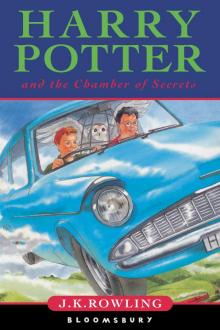 Harry Potter and the Chamber of Secrets
Harry Potter and the Chamber of Secrets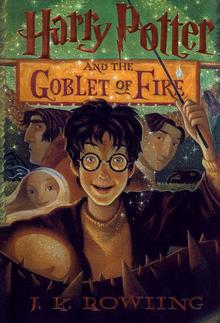 Harry Potter and the Goblet of Fire
Harry Potter and the Goblet of Fire Harry Potter and the Deathly Hallows
Harry Potter and the Deathly Hallows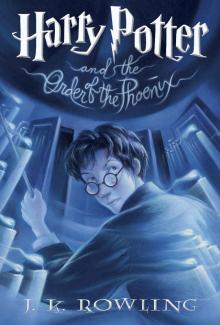 Harry Potter and the Order of the Phoenix
Harry Potter and the Order of the Phoenix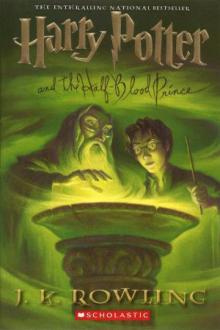 Harry Potter and the Half-Blood Prince
Harry Potter and the Half-Blood Prince Harry Potter and the Prisoner of Azkaban
Harry Potter and the Prisoner of Azkaban Fantastic Beasts and Where to Find Them
Fantastic Beasts and Where to Find Them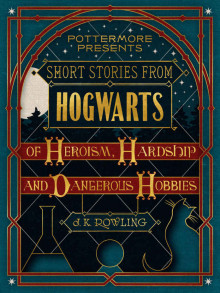 Short Stories from Hogwarts of Heroism, Hardship and Dangerous Hobbies
Short Stories from Hogwarts of Heroism, Hardship and Dangerous Hobbies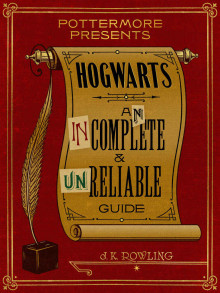 Hogwarts: An Incomplete and Unreliable Guide
Hogwarts: An Incomplete and Unreliable Guide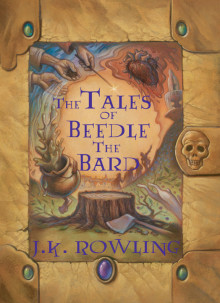 The Tales of Beedle the Bard
The Tales of Beedle the Bard The Casual Vacancy
The Casual Vacancy Harry Potter and the Cursed Child
Harry Potter and the Cursed Child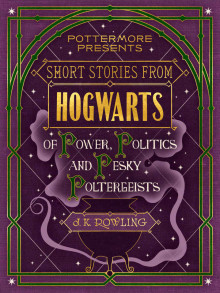 Short Stories from Hogwarts of Power, Politics and Pesky Poltergeists
Short Stories from Hogwarts of Power, Politics and Pesky Poltergeists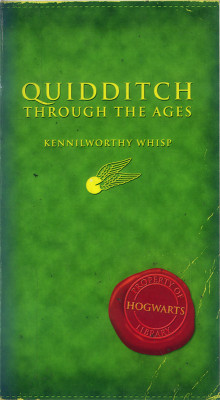 Quidditch Through the Ages
Quidditch Through the Ages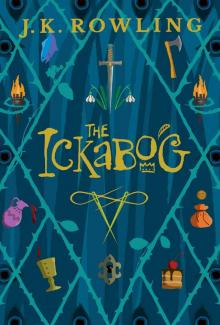 The Ickabog
The Ickabog![Fantastic Beasts, The Crimes of Grindelwald [UK] Read online](http://i1.bookreadfree.com/i/03/19/fantastic_beasts_the_crimes_of_grindelwald_uk_preview.jpg) Fantastic Beasts, The Crimes of Grindelwald [UK]
Fantastic Beasts, The Crimes of Grindelwald [UK]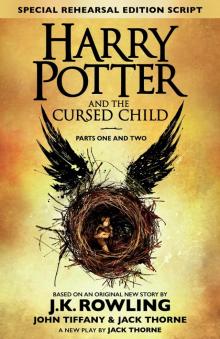 Harry Potter and the Cursed Child: Parts One and Two
Harry Potter and the Cursed Child: Parts One and Two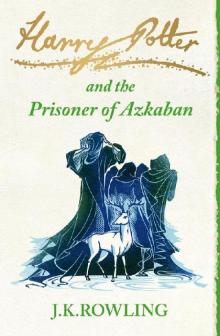 The Prisoner of Azkaban
The Prisoner of Azkaban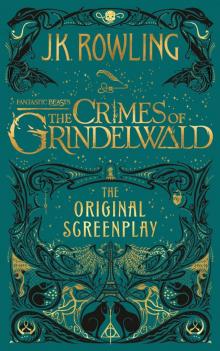 Fantastic Beasts: The Crimes of Grindelwald
Fantastic Beasts: The Crimes of Grindelwald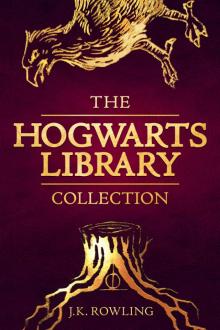 The Hogwarts Library Collection
The Hogwarts Library Collection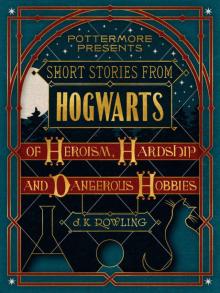 Short Stories from Hogwarts of Heroism, Hardship and Dangerous Hobbies (Kindle Single) (Pottermore Presents)
Short Stories from Hogwarts of Heroism, Hardship and Dangerous Hobbies (Kindle Single) (Pottermore Presents)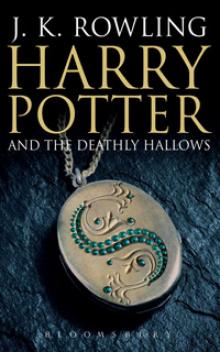 Harry Potter and the Deathly Hallows hp-7
Harry Potter and the Deathly Hallows hp-7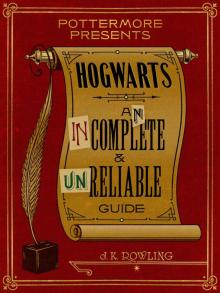 Hogwarts: An Incomplete and Unreliable Guide (Kindle Single) (Pottermore Presents)
Hogwarts: An Incomplete and Unreliable Guide (Kindle Single) (Pottermore Presents)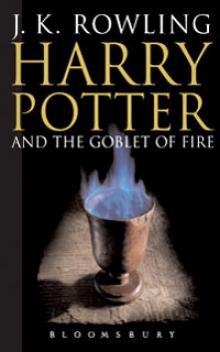 Harry Potter and the Goblet of Fire hp-4
Harry Potter and the Goblet of Fire hp-4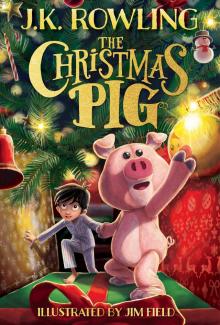 The Christmas Pig
The Christmas Pig Harry Potter and the Sorcerer's Stone
Harry Potter and the Sorcerer's Stone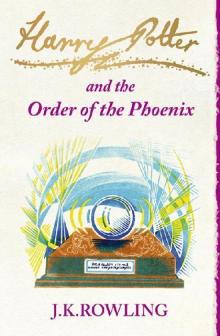 The Order of the Phoenix
The Order of the Phoenix Harry Potter and the Prisoner of Azkaban hp-3
Harry Potter and the Prisoner of Azkaban hp-3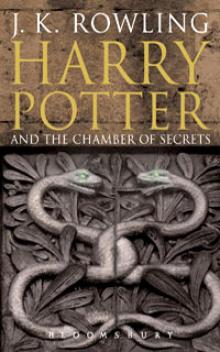 Harry Potter and the Chamber of Secrets hp-2
Harry Potter and the Chamber of Secrets hp-2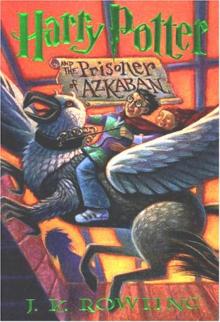 HP 3 - Harry Potter and the Prisoner of Azkaban
HP 3 - Harry Potter and the Prisoner of Azkaban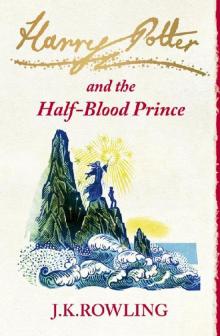 The Half-Blood Prince
The Half-Blood Prince The Hogwarts Collection
The Hogwarts Collection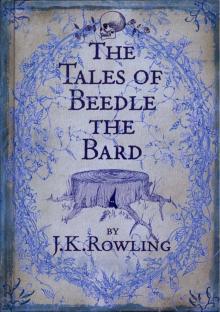 Tales of Beedle the Bard
Tales of Beedle the Bard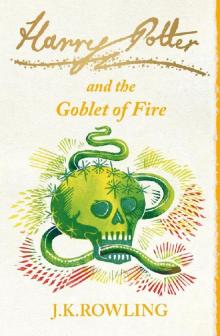 The Goblet of Fire
The Goblet of Fire Harry Potter and the Half-Blood Prince hp-6
Harry Potter and the Half-Blood Prince hp-6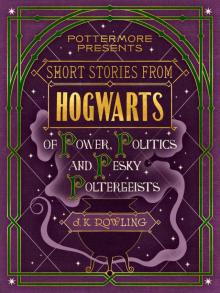 Short Stories from Hogwarts of Power, Politics and Pesky Poltergeists (Kindle Single) (Pottermore Presents)
Short Stories from Hogwarts of Power, Politics and Pesky Poltergeists (Kindle Single) (Pottermore Presents)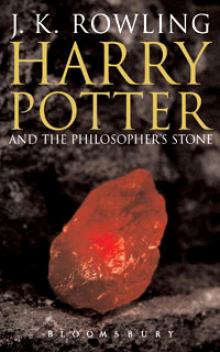 Harry Potter and the Sorcerer's Stone hp-1
Harry Potter and the Sorcerer's Stone hp-1